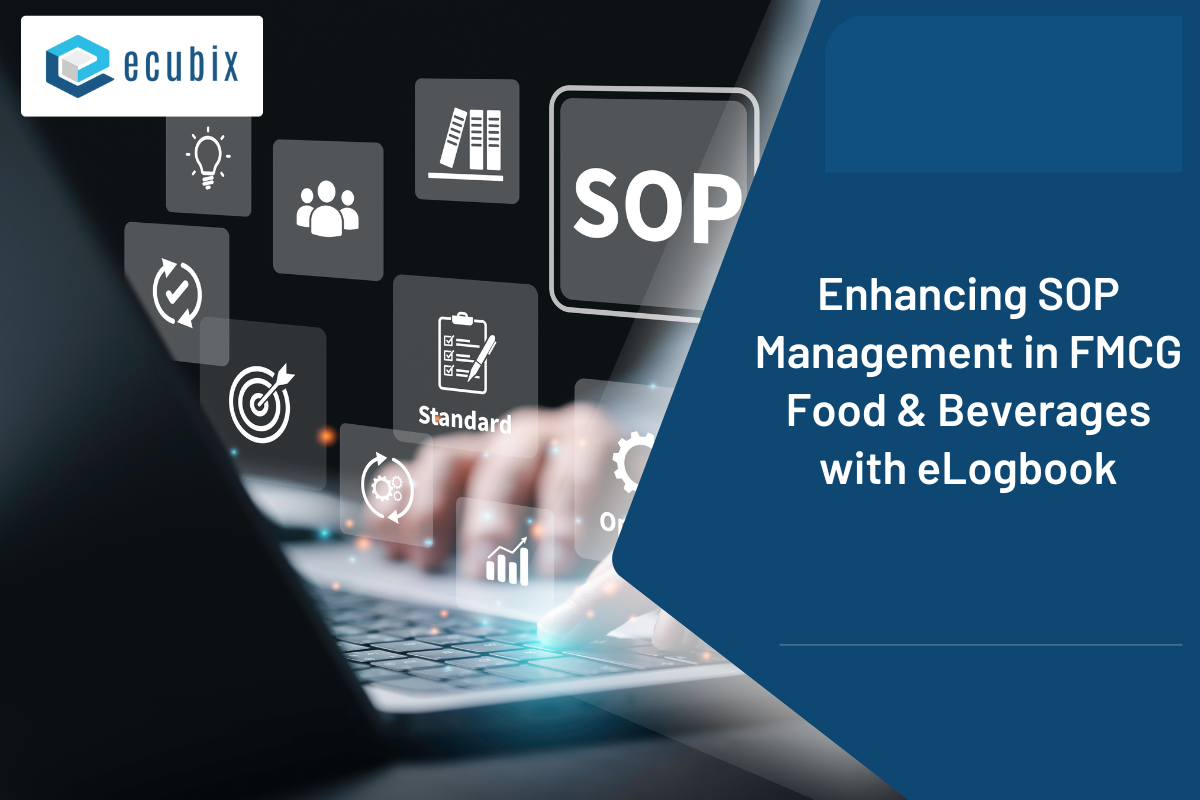
Table of Contents
Published on: March 6, 2023
Enhancing Operations with a Comprehensive Digital Checklist in FMCG industry
In today’s fast-paced and technology-driven world, the FMGC industry is constantly looking for ways to improve its operations and provide a better experience to its customers. One way to achieve this is by implementing a comprehensive digital checklist, which can help streamline processes, reduce errors and improve legal compliance.
Digitalization of manufacturing operations has brought numerous benefits to the Food Processing industry. The use of digital checklists has replaced paper-based systems and allowed for real-time data collection and analysis, providing valuable insights into food processing operations and improving decision-making. Moreover, digital checklists are more user-friendly, making it easier for shop floor employees to quickly access and complete the necessary tasks.
A digital checklist enhances operational efficiency and also ensures legal compliance. A digital checklist provides a centralized platform for all required tasks and procedures, reducing the risk of important tasks being overlooked or skipped. This not only meets the legal requirements set by legal authorities, but it also helps to minimize the risk of operational incidents.
Benefits of a Comprehensive Digital Checklist
- Increased Operational Efficiency
Digital checklists enable personnel to quickly and easily access the necessary information and complete tasks, reducing the risk of errors and increasing operational efficiency.
- Improved Data Collection
Digital checklists allow for real-time data collection and analysis, providing valuable insights into processes and enabling continuous improvement.
- Enhanced Legal Compliance
A comprehensive digital checklist provides a centralized platform for all required tasks and procedures, ensuring that all necessary steps are completed and in compliance with FSSAI regulations.
- Increased Safety
By reducing the risk of errors and ensuring that all necessary tasks are completed, a digital checklist helps to improve staff safety and reduce the risk of operational incidents.
- Better Customer Experience
Improved operational efficiency and increased safety lead to a better overall customer experience, helping organizations to stand out in a competitive industry.
A comprehensive digital checklist is a critical tool for enhancing operations and ensuring legal compliance. By streamlining processes, reducing errors, and improving data collection and analysis, the Food Processing industry can improve its operational efficiency, increase safety and provide a better experience to its customers.
Food processing is a critical industry that affects the health and safety of millions of people globally. It is essential to have stringent audit procedures in place to ensure that the food produced is of high quality and meets all relevant regulatory requirements. Encapsulate key aspects of a stringent food processing audit procedure.
- Documentation Review
The first step of any food processing audit is to review the company’s documentation. This includes reviewing the company’s quality manual, standard operating procedures, and food safety plans. This helps to understand the company’s approach to food safety and quality control and to identify any potential areas of concern.
- Plant Inspection
The next step is to conduct a physical inspection of the plant. This includes checking the facilities, equipment, and processes to ensure that they meet the required standards. The inspector should also observe the employees to ensure that they are following the standard operating procedures correctly.
- Product Testing
The next step is to test the product to ensure that it meets all the necessary quality and safety standards. This may include testing for contaminants, pathogens, and other potential hazards. The results of these tests should be compared to the company’s established standards to determine if any corrective actions are necessary.
- Employee Interviews
Employee interviews are a critical part of the audit process. The inspector should speak with employees to gather their perceptions of the company’s food safety and quality programs. This helps to identify any areas where improvements can be made and to ensure that the employees are properly trained and following the standard operating procedures.
- Record Keeping
Finally, the inspector should review the company’s record-keeping practices. This includes reviewing the records of product testing, employee training, and other relevant documentation. Proper record-keeping is essential for demonstrating compliance with regulatory requirements and for conducting effective investigations in case of food safety incidents.
A stringent food processing audit procedure is critical for ensuring the safety and quality of food products. It includes a review of the company’s documentation, a physical inspection of the plant, product testing, employee interviews, and record keeping. These steps help to identify areas of concern and to ensure that the company is following best practices for food safety and quality control.
Food safety is a crucial aspect of the FMCG industry, and companies must follow strict guidelines to ensure that their products do not pose a risk to consumers. This includes adhering to good manufacturing practices, conducting regular testing of products, and ensuring that the supply chain is free from contamination.
Finally, FMCG companies must ensure that they protect the rights of consumers. This involves having clear and fair terms and conditions, as well as taking appropriate steps to address any complaints or issues that may arise.

















